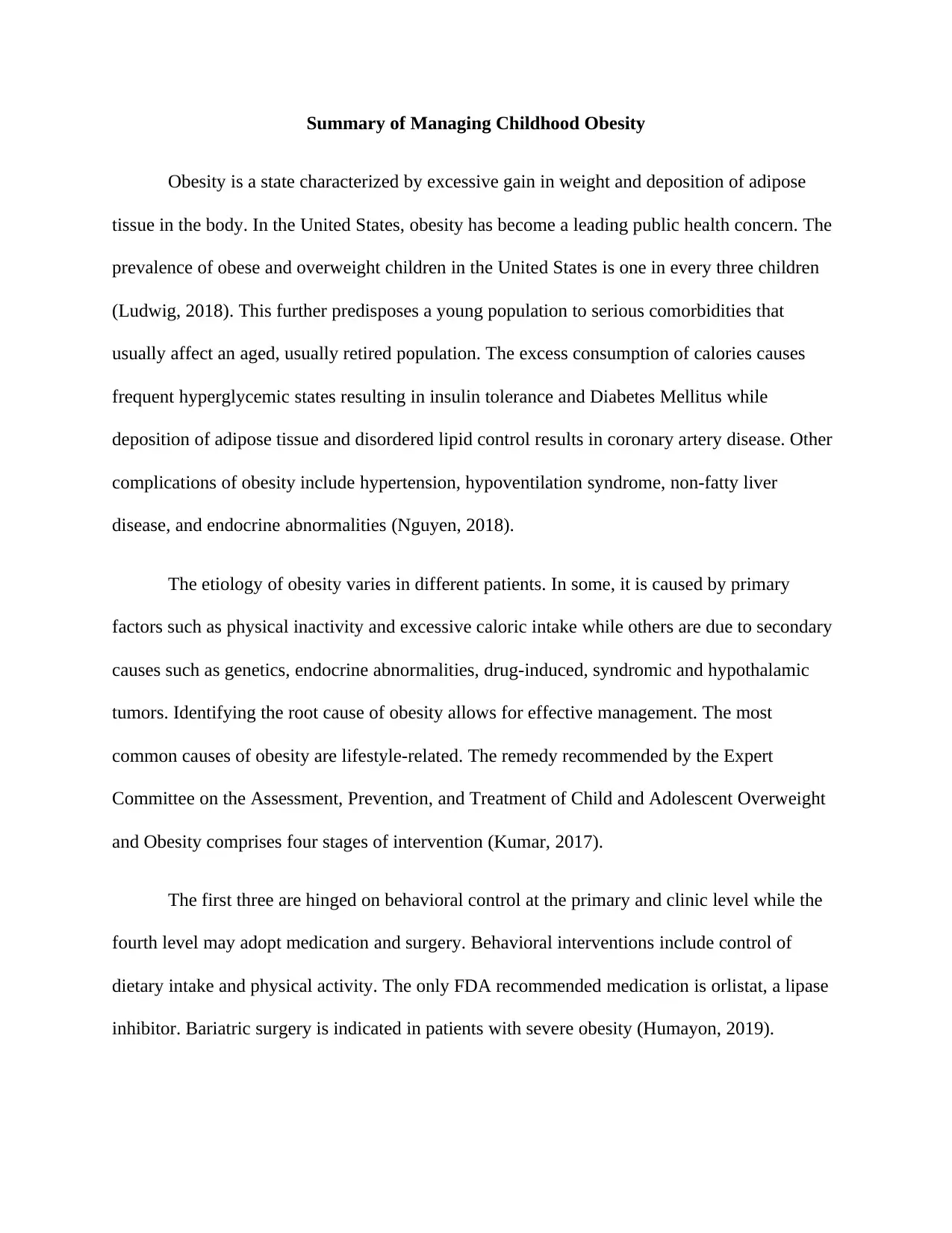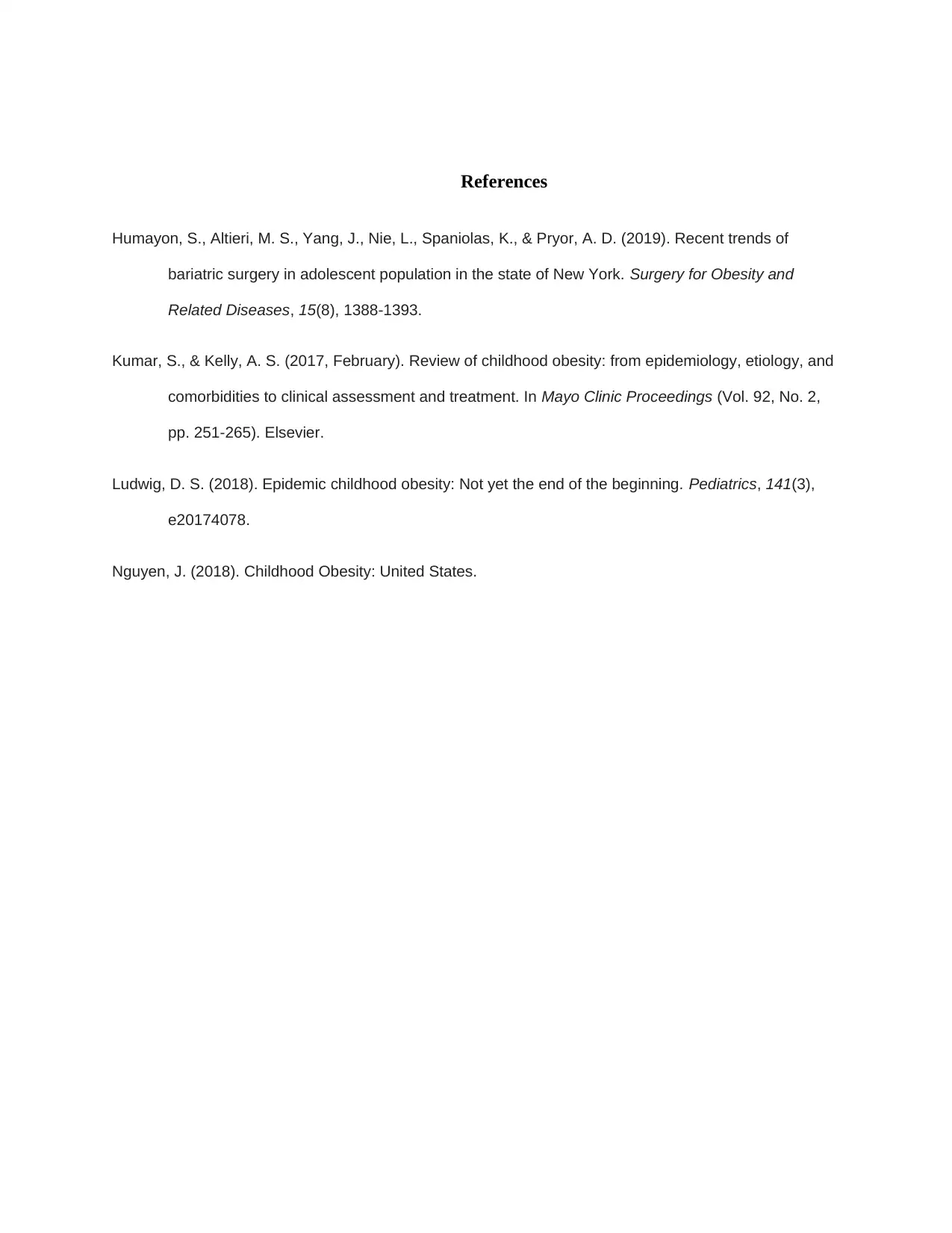Infographic Summary: Managing Childhood Obesity - NU 440 Assignment
VerifiedAdded on 2022/09/06
|3
|465
|20
Homework Assignment
AI Summary
This assignment summary focuses on managing childhood obesity, a significant public health concern in the United States. The prevalence of obesity among children is alarmingly high, predisposing them to various comorbidities like diabetes, coronary artery disease, and hypertension. The etiology of obesity varies, often stemming from lifestyle factors such as physical inactivity and excessive caloric intake, but also influenced by genetics, endocrine abnormalities, and other secondary causes. The assignment outlines a four-stage intervention strategy recommended by the Expert Committee on the Assessment, Prevention, and Treatment of Child and Adolescent Overweight and Obesity, including behavioral controls for dietary intake and physical activity. It also mentions the FDA-recommended medication orlistat and bariatric surgery as options for severe cases. The summary emphasizes the importance of identifying root causes for effective management, highlighting the role of lifestyle modifications and, in severe cases, medical interventions.
1 out of 3










![[object Object]](/_next/static/media/star-bottom.7253800d.svg)